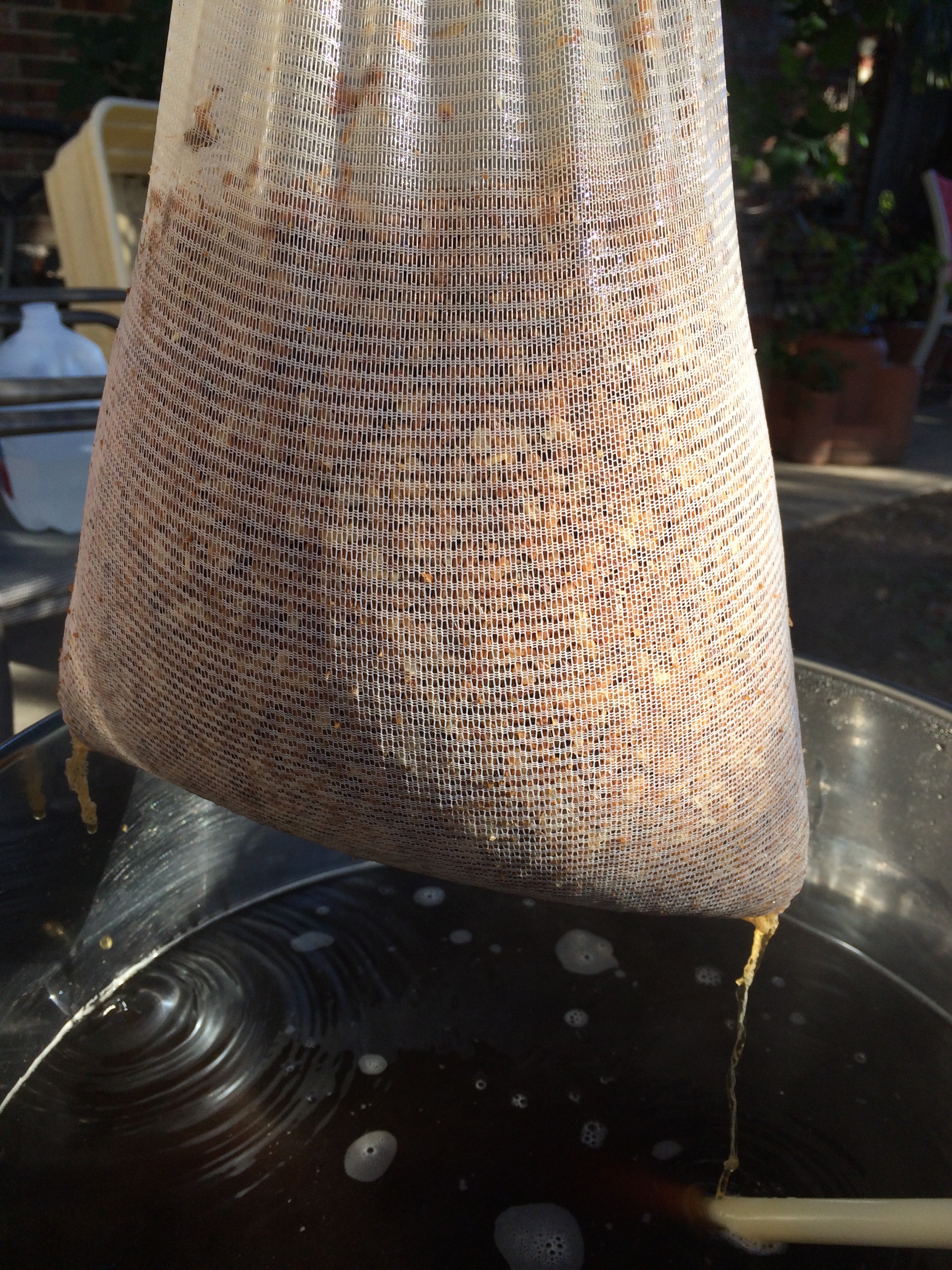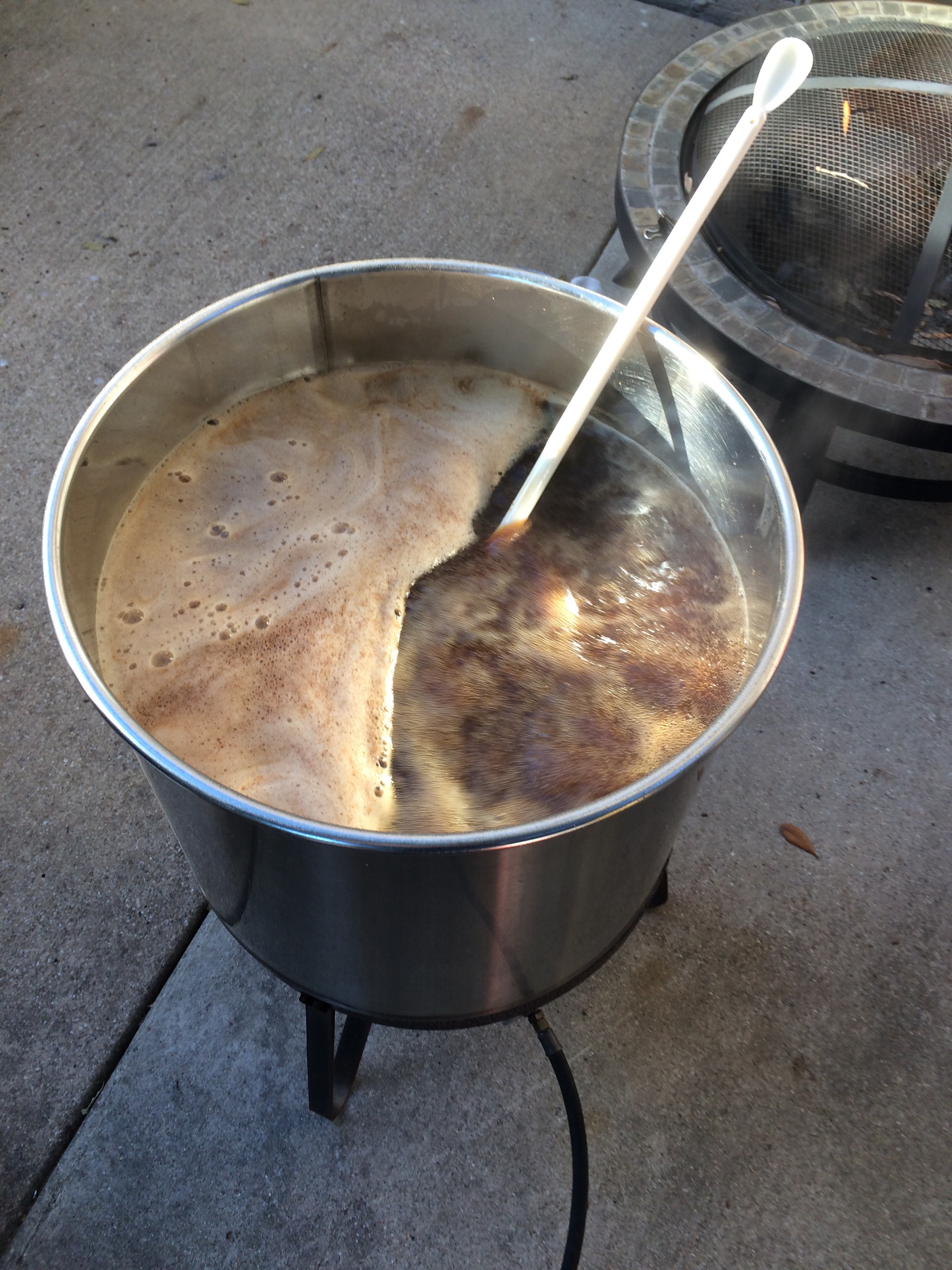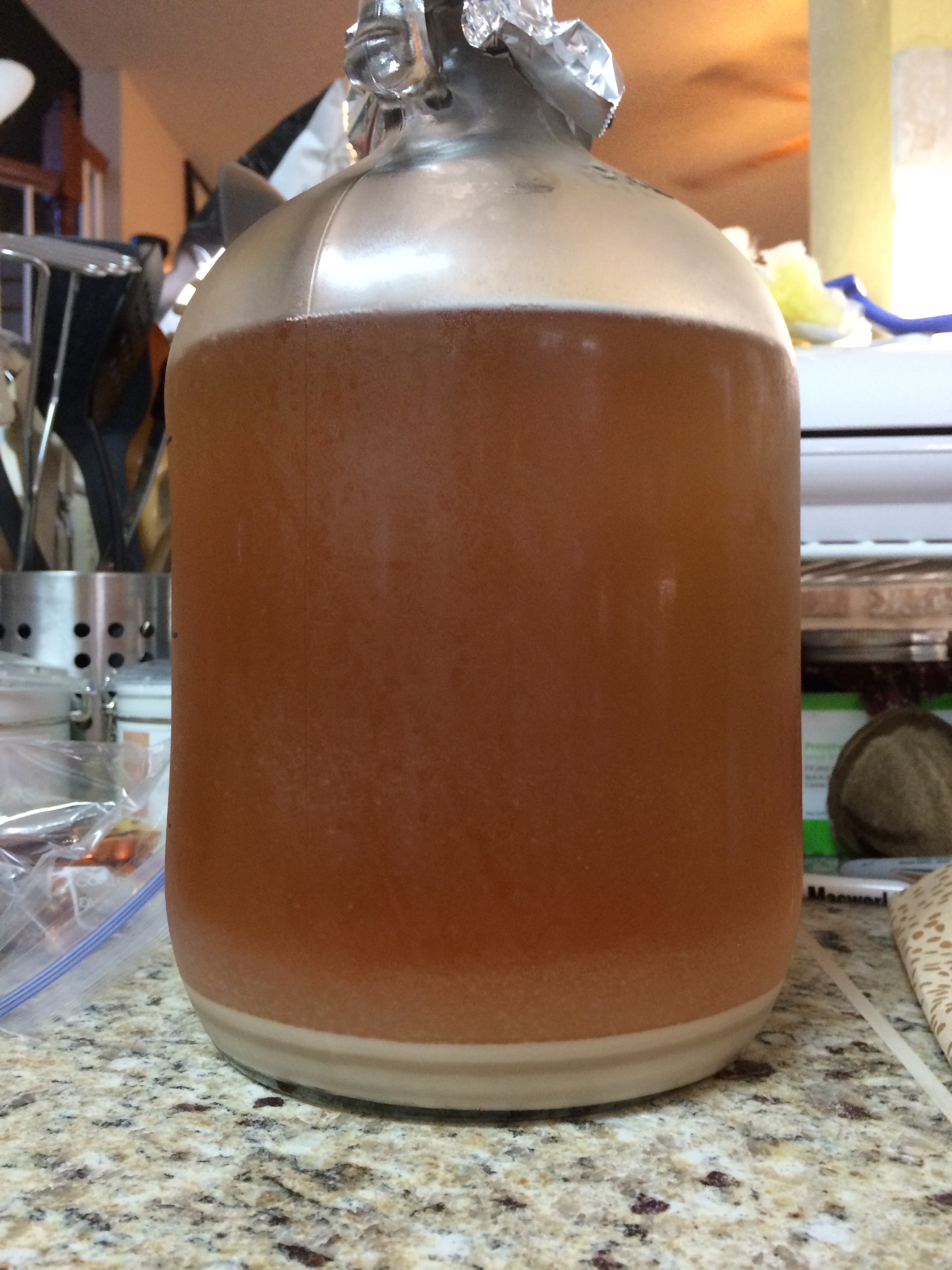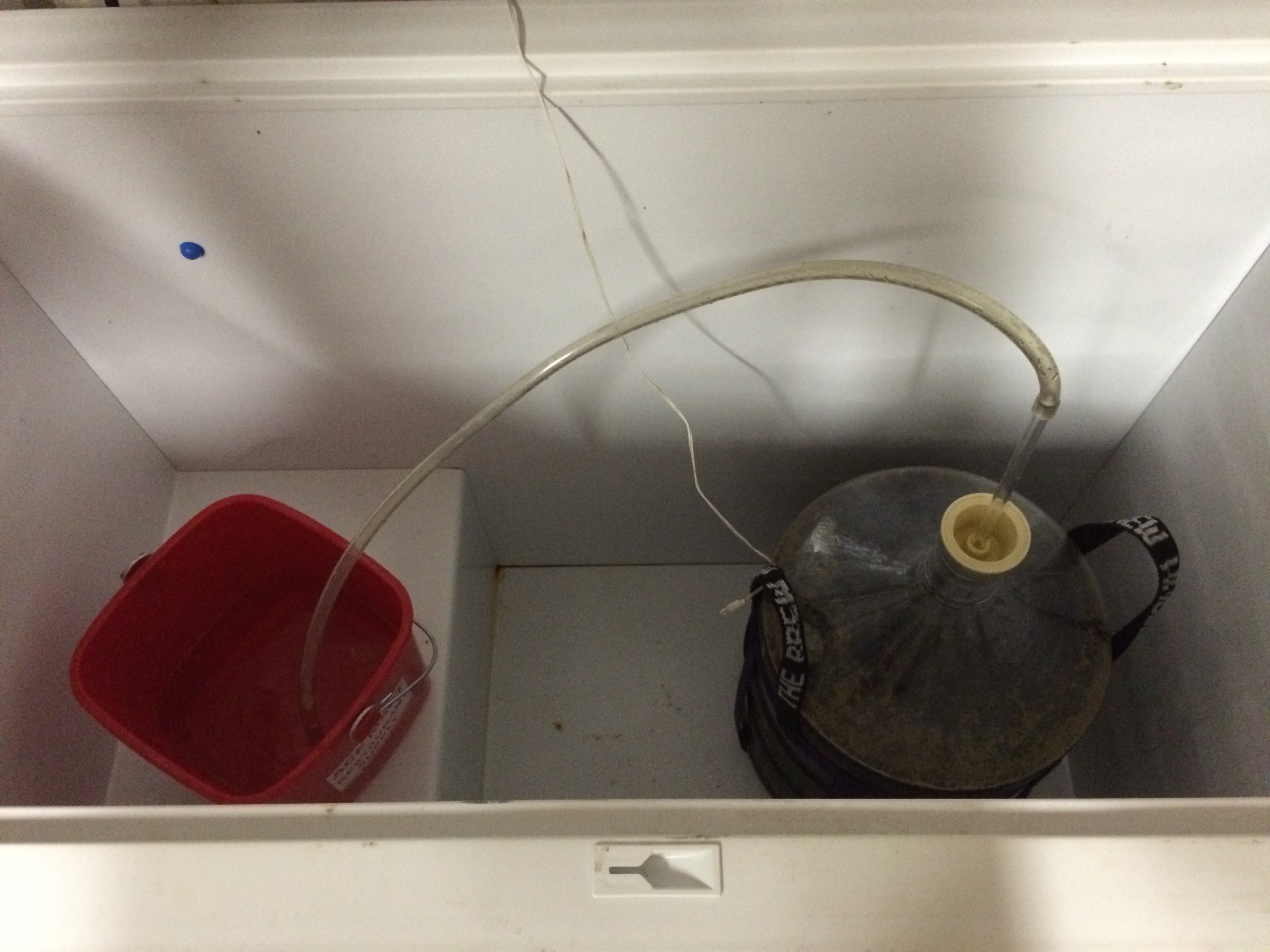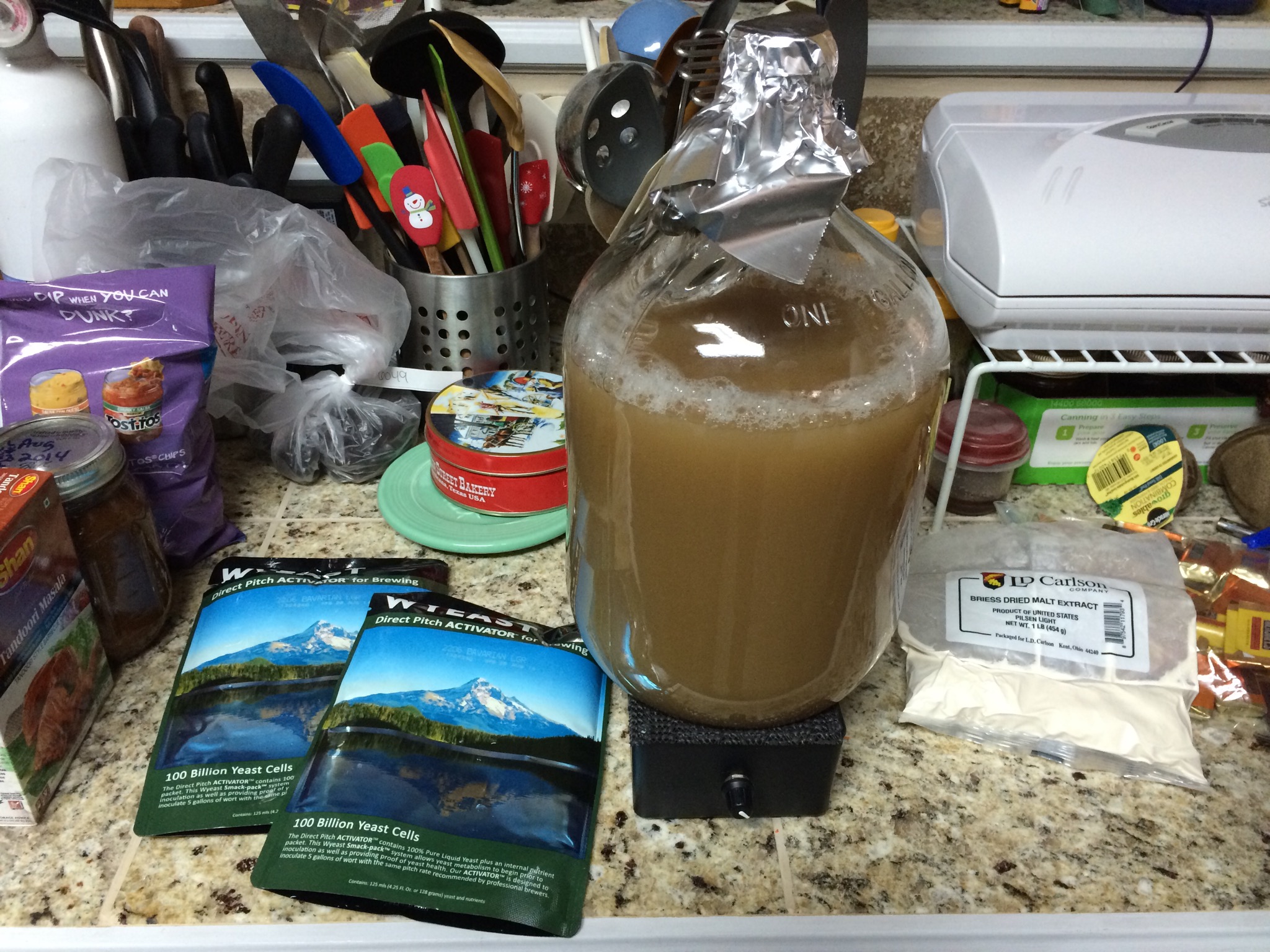Today was brew day, so I gathered my ingredients and equipment and started brewing the doppelbock.
The first step was to get 6.6 gallons of water in the kettle and get it heated up to 150 degrees. Once it reached that, I dropped the heat and added the grain bag with the specialty grains. They steeped for an hour, with the temperature holding at around 155.
Once they finished steeping, I added the LME, DME, and honey and got them all dissolved before turning the heat back up to start the boil. It’s a standard 60 minute boil, with the hops added at the start of the boil, 15 minutes in, 45 minutes in, and at a minute before flameout. At 30 minutes in, I added the uncrushed roasted malts to steep for the rest of the boil.
Once the boil was complete, it was time to chill it down to pitching temperature, which is done with a copper immersion chiller. I start off with a garden hose hooked up to it, running tap water through until it’s down to about 100 degrees or so, then switch over to an outdoor fountain pump recirculating ice water from a cooler. Because this one needed to be colder than my ales, it was 50 pounds of ice plus water. Within 20 minutes I had it knocked down to 68 degrees, which was the perfect temperature to transfer it to the carboy and pitch the yeast.
After pitching, it was put in the chest freezer, the blowoff was connected, and I waited for activity. This yeast is apparently pretty active, because within about four hours, there was a light, steady bubbling in the water bucket. At that point, I dropped the temperature to 58 degrees and went to bed. I’ll bring it down to 53 in the morning, where it will ferment for the next few weeks.
